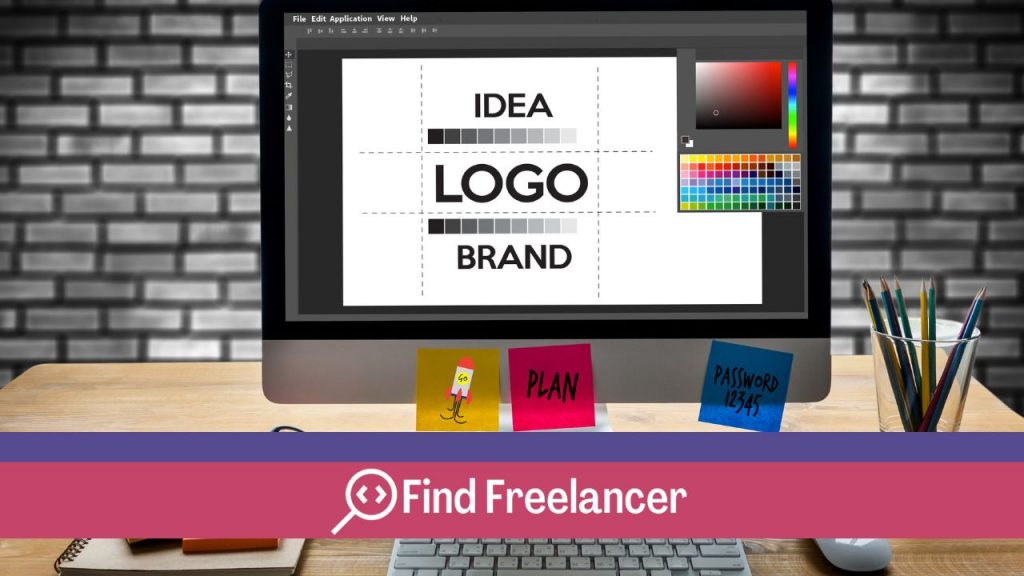Minimalist logos have become an unavoidable trend in the field of graphic design and branding. Their apparent simplicity often conceals a complex creative process aimed at capturing a brand’s essence in a few strokes and shapes. In this article, we take an in-depth look at what a minimalist logo is, its advantages and disadvantages, and some inspiring examples. Whether you’re a start-up looking to stand out or an established brand in search of modernity, understanding the potential of a minimalist logo is essential to building a strong and memorable visual identity.
Description of minimalist logos
Minimalist logos are distinguished by their simplicity and ability to communicate a lot with a little. They use simple shapes, colors and typography to represent a brand’s essence. This uncluttered approach makes them easier to read and more memorable. Minimalist logos are often appreciated for their ability to adapt to different media without losing their visual impact. However, their design can be complex, as each element must be carefully selected to convey the brand message clearly and concisely. In short, minimalist logos offer a modern aesthetic and a strong visual identity while remaining easily recognizable.
Benefits of minimalist logos
These are :
Clarity and readability
Minimalist logos are characterized by their visual simplicity, making them clear and easy to read. By using few graphic elements, they enable quick reading and immediate comprehension, even on a small scale. This is particularly beneficial in a world where consumers are often overloaded with visual information.
Memorability and visual impact
The simplicity of minimalist logos makes them easily memorable. They capture a brand’s essence concisely, which reinforces their visual impact. Logos that are simple and easy to recognize are more likely to stick in consumers’minds, contributing to better brand recognition and increased loyalty.
Adaptability to different media
Thanks to their sleek design, minimalist logos are highly adaptable to a variety of media and formats. Whether on physical media such as business cards or signs, or digital media such as websites or apps, minimalist logos retain their legibility and aesthetic appeal. This ensures visual consistency across all brand communication channels, reinforcing the company’s overall visual identity.
Disadvantages of minimalist logos
These are :
Risk of trivialization
Because of their simplicity, minimalist logos can sometimes seem generic or too similar to other brands. This can reduce a brand’s ability to stand out and create a distinctive identity.
Difficulty representing a brand’s complexity
For brands with a complex offering or several aspects to communicate, a minimalist logo may not be enough to convey all the company’s richness and diversity. The simplicity of the design may limit the logo’s ability to represent the depth and complexity of the brand.
Examples of famous minimalist logos
Here are a few examples of famous minimalist logos:
- Nike: The swoosh logo is one of the most emblematic examples of minimalism. A simple black swoosh on a white background, it embodies both movement and simplicity.
- Apple: The bitten apple logo is world-renowned for its simplicity and profound meaning, representing innovation and technology.
- Google : Although slightly more complex, the current Google logo uses bright colors and a simple design to symbolize diversity and accessibility.
- Adidas : The three parallel stripes of the Adidas logo are a classic example of effective minimalism, representing performance and athleticism.
- McDonald’s : McDonald’s famous golden arches are another example of a minimalist logo, instantly recognizable around the world.
These logos illustrate how minimalism can create iconic, timeless designs that transcend cultural and linguistic boundaries.
Tips for creating an effective minimalist logo
Practical tips are :
Design process
To create a minimalist logo, start with thorough research into the brand and its values. Then simplify concepts using sketches to capture the brand’s essence. Revise and iterate to refine the design, ensuring that every element contributes to the clear representation of the brand.
Using shapes, colors and typography
Choose simple shapes and clean lines to create a balanced, harmonious design. Use a limited color palette and simple typography to ensure legibility and memorability. Ensure that color and typography choices reflect the brand’s identity and values, reinforcing the visual impact of the minimalist logo.Top of form
Bottom of form










